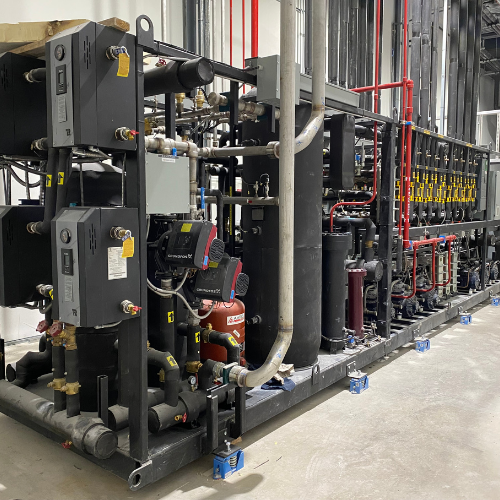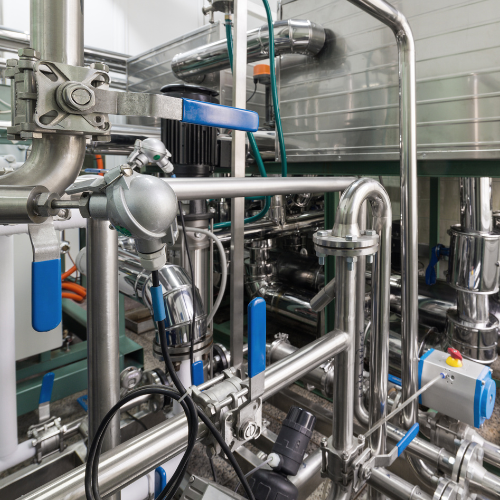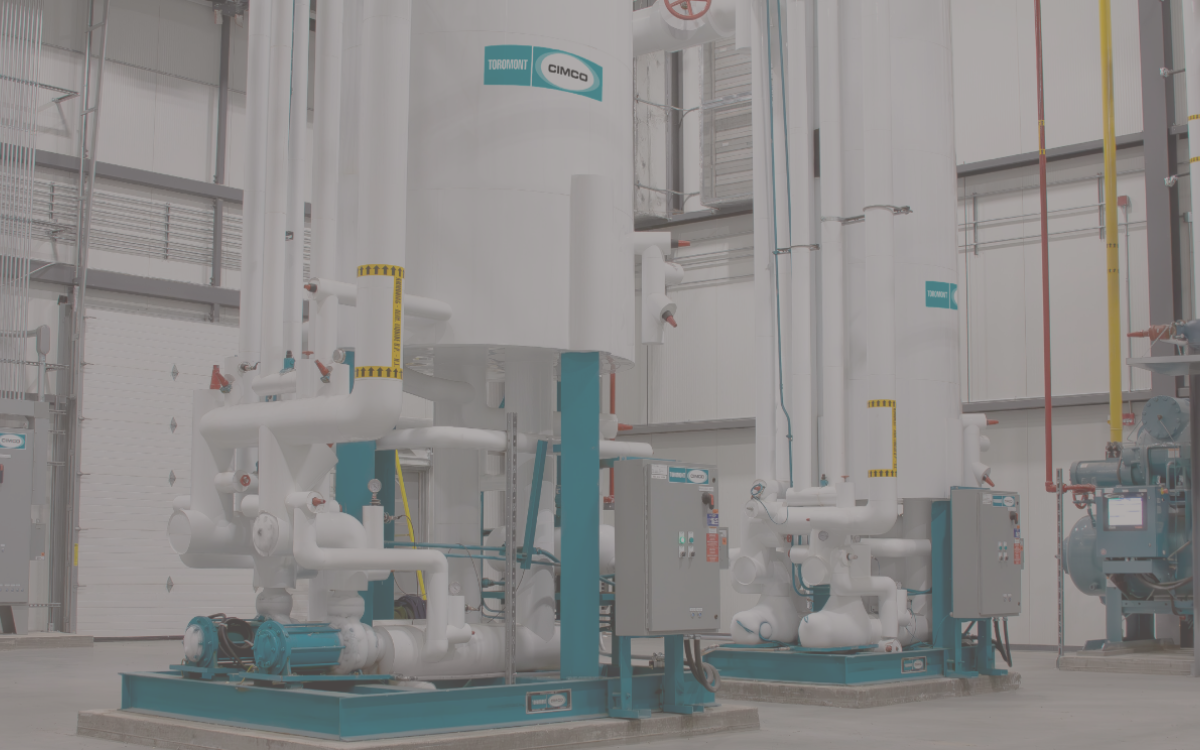CIMCO’s innovative “thermal hub” concept was recently presented at the CampusEnergy2025 conference in Boston (US), sharing a detailed case study on a US-based campus with a district energy system in need of upgrading. What is a thermal hub, and how can thermal energy storage help facilities reduce operating expenses?
Evaluation of Traditional Solutions
The university initially evaluated several conventional approaches, each presenting significant limitations. Adding conventional chillers would increase peak demand charges and require costly electrical infrastructure upgrades. Heat recovery chillers were limited by 170°F hot water output and 41°F source temperature requirements. Converting the steam network to accommodate lower-temperature hot water systems would require expensive modifications to historical buildings. Electric boilers would further increase peak demand charges and require substantial infrastructure upgrades while offering limited efficiency with a coefficient of performance (COP) of 1.
As such, the university knew that conventional approaches would not provide the solution they sought, and an alternative was necessary.
Initial Requirements and Objectives
The university approached CIMCO with four objectives:
- Implement thermal storage to meet growing cooling demands,
- Reduce operational expenses through peak demand reduction,
- Enhance system resiliency, and optimize funding through Inflation Reduction Act (IRA) support
- The project also needed to align with their 2050 carbon neutrality goals.
Innovative Storage Solutions
Given ice thermal storage's mature technology status, CIMCO conducted a thorough evaluation of five proven, commercially available thermal energy storage (TES) options.
The university identified an existing 50' x 50' x 60' building for the thermal storage system and, after evaluating various options, selected ice-based storage as the best fit for the space. The chosen solution – a site-built concrete tank with multiple glycol coils – achieves 37,000 ton-hours of storage capacity. This solution was chosen because it provided the most storage capacity in the given space, and the lowest lifecycle costs compared to other options. This design offers superior redundancy, with any single coil failure resulting in only 1% capacity loss.
Evaluation of Traditional Solutions
The project evolved beyond basic thermal storage through iterative design revisions. The glycol-based cooling system created an opportunity to incorporate a chilled water module, enabling dual functionality. This adaptation allows the chiller to both produce ice and supply chilled water directly to the district cooling loop, enhancing system reliability.
Further analysis revealed opportunities for deeper integration with the campus's extensive steam network, which faced the challenge of transitioning to hot water systems while maintaining steam service for hospital operations.
The second design revision introduced a heat pump module capable of upgrading system waste heat from 90°F to 180°F for domestic hot water applications. The design maintains a secondary, low-stage condenser configuration to manage seasonal variations, allowing flexible heat rejection while prioritizing ice production in summer months.
This integrated solution advances environmental objectives including carbon footprint reduction, waste minimization, and sustainable infrastructure development, while addressing growing campus heating needs. The heat pump's higher COP compared to electric boilers reduces both infrastructure requirements and operational expenses through natural gas reduction, supporting scope one carbon emission reduction goals through efficient heat electrification.
Technical Implementation
The technical solution centers on a customized two-stage ammonia system that delivers exceptional operational efficiency across multiple simultaneous production modes. It aligns perfectly with the campus’ sustainability goals thanks to the negligible environmental impact of the refrigerant and proven performance – addressing both Scope 1 and 2 emissions.
Understanding the Thermal Hub Concept
The thermal hub represents an advanced flexible thermal management system that coordinates multiple temperature sources and sinks at the refrigeration system level, eliminating the need for additional controls or heat exchangers.
Grid Integration and Electrification Strategy
Sector coupling between thermal and electrical grids will be a key component to ensure successful electrification and adoption of renewable energy. A flexible thermal hub system is the perfect link to support this synergy because when renewable energy is abundant and cheap, the thermal hub can utilize it and store thermal energy while simultaneously providing grid relief. Conversely, when the renewable energy supply diminishes, and prices rise, the thermal hub can de-couple and utilize the stored energy to reduce demand on the grid. In this manner, the thermal hub would also provide significant financial savings for the DHC system owner.
Future Development
Current project development focuses on refining an Energy-as-a-Service approach, including detailed operational expenditure projections across various 30-year scenarios. While project viability depends on IRA funding availability, the thermal hub concept demonstrates how innovative engineering solutions can simultaneously address campus growth, environmental goals, and grid stability while providing a blueprint for large-scale institutional decarbonization.

About the Author:
Bashar Naser, CIMCO Refrigeration's Business Development leader for District Energy, is a professional engineer. He has been with the company for over 13 years, and his expertise lies in sustainable thermal solutions and industrial heating and cooling systems. Throughout his career, Bashar has accumulated extensive experience in design, management, product development, and business development, which he now applies to develop innovative solutions for building and process decarbonization in the district energy sector.
Related Posts

DesLaurier Cold Storage

Comparison of Key Refrigeration System Components: Making the Right Choice for Your Operation
.png?sfvrsn=26cbdc22_3)
Ammonia Heat Pumps Achieve 185°F, Ditch the Boiler for Food & Beverage Production
|
|



